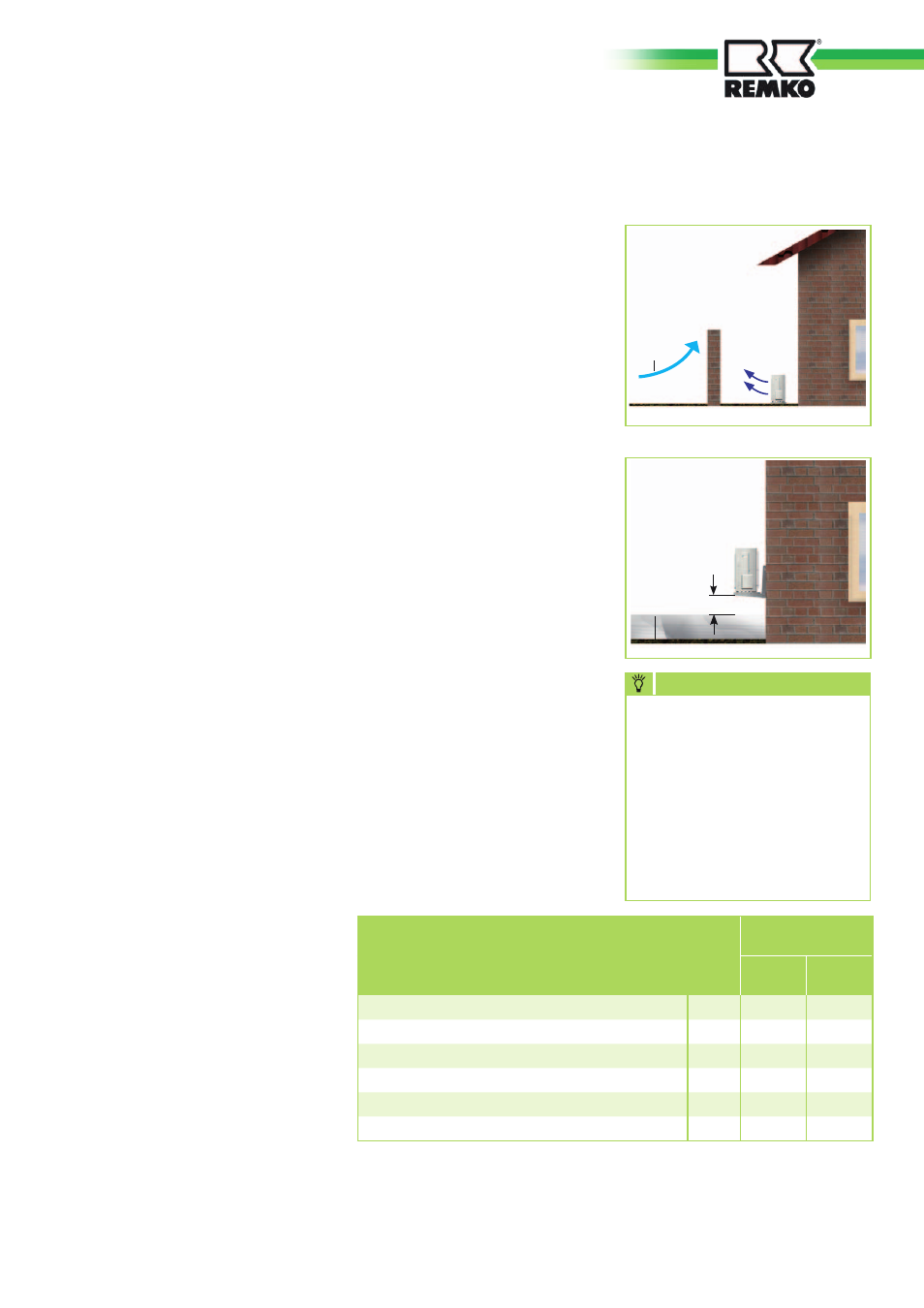REMKO CMF-120-1P User Manual
Page 17

■
The device may be attached
only to a load-bearing structure
or wall. Ensure that the outdoor
module is installed only
vertically. The installation site
should be well ventilated.
■
To minimise noise, install floor
consoles with vibration dampers
and a considerable distance
from acoustically-reflective
walls to minimise noise.
■
The minimum clearances
specified on the next page
should be maintained when
carrying out the installation.
These minimum distances serve
to ensure unrestricted air intake
and exhaust.
Additionally, there must be
adequate space available for
installation, maintenance and
repair.
■
If the outdoor module is
erected in an area of strong
winds, then the device must be
protected against them. The
snow line is to be observed
during installation (see figures).
■
The outdoor module must
always be installed on vibration
dampers. Vibration dampers
prevent the transmission of
vibrations through the floor or
walls.
■
A heated, condensate catch-
pan ensures that condensation
from the pan can drain off.
Ensure that the condensate
is prevented from freezing so
that it can drain off (gravel,
drainage). The Water Ecology
Act is to be observed.
Outdoor-module installation location
■
If there is insufficient space
under the device for the
refrigerant lines, then the pre-
cut recesses can be removed
from the lower enclosure-panel
and the pipes guided through
these openings.
■
During installation, add about
20 cm to the expected snow
depth to guarantee unimpeded
intake and exhaust of outdoor
air year round.
■
The installation site of the
outdoor module should be
agreed together with the
operator primarily so that
operating noise is minimised
and not in terms of “short
routes”. Thanks to the split-
design technology there
are a great deal of different
installation options with almost
identical efficiency available.
Wind
The site for the outdoor
module must be selected
so that machinery noise that
occurs disturbs neither the
residents nor the facility
operator. Observe the TA-
noise specifications as well
as the table containing the
drawings relating to sound
pressure levels on page 53!
NOTE
Assessment level in
accordance with TA
noise
Point of emissions
days
nights
Industrial areas
dB(A)
70
70
Commercial areas
dB(A)
65
50
Core areas, village areas and mixed zones
dB(A)
60
45
General residential areas and small housing estates dB(A)
55
40
Exclusively residential areas
dB(A)
50
35
Spa areas, hospitals and mental institutions
dB(A)
45
35
Isolated noise peaks of short duration may not exceed 30 dB(A) during
the day and 20 dB(A) at night.
Snow + 20 cm
17
